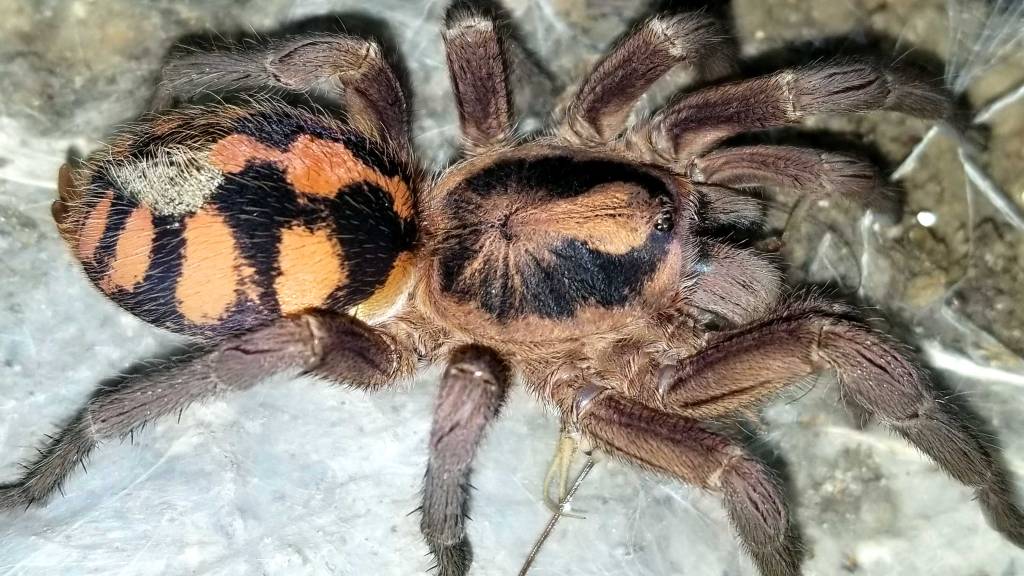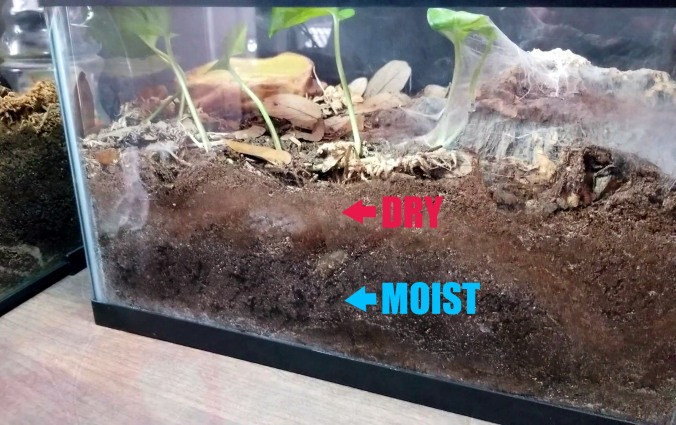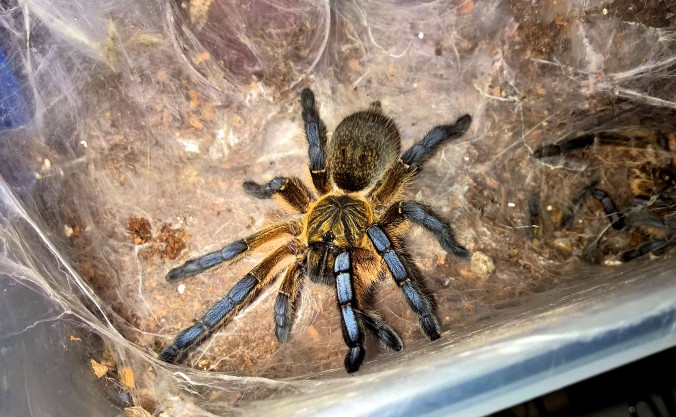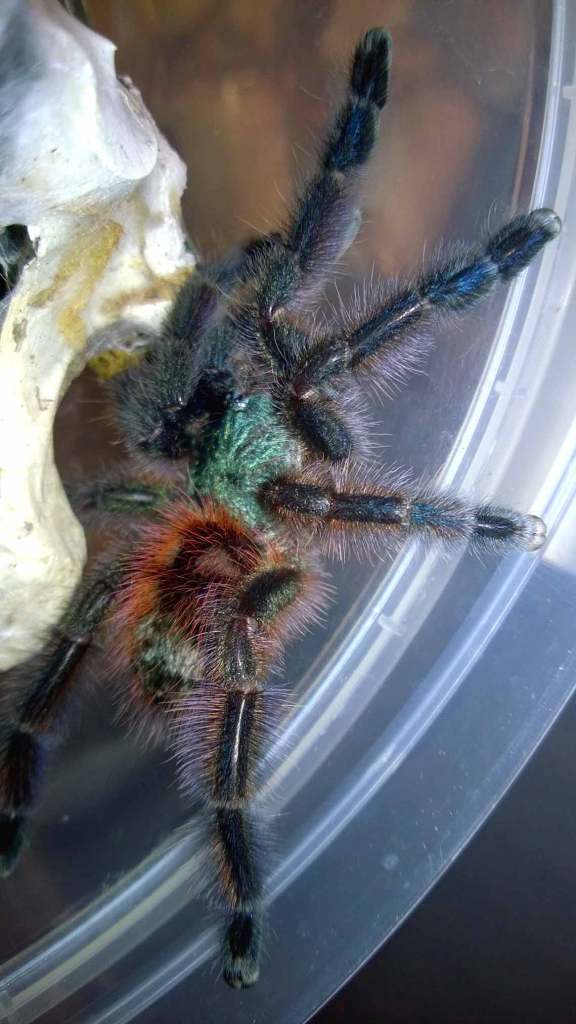 A heads up to “Pokie” lovers…this one is going to sting a bit…
A heads up to “Pokie” lovers…this one is going to sting a bit…
Note: The following information impacts ONLY hobbyists in the United States.
In July of this year, the United States Fish and Wildlife Service released its final report and ruling on Poecilotheria species. Per this ruling, five species of Poecilotheria from Sri Lanka were deemed endangered species under the Endangered Species Act of 1973 and added to the List of Endangered and Threatened Wildlife. The five species impacted by this decision are:
- Poecilotheria fasciata
- Poecilotheria ornata
- Poecilotheria smithi
- Poecilotheria subfusca
- Poecilotheria vittata
This rule becomes effective on August 30, 2018. As a result of this new law, there are some major changes in how these five species can be imported and sold in the United States. Here is how it breaks down and how keepers may be impacted.
Does this mean that it is now illegal to keep these species?
No, it is NOT illegal to keep these species. Those who currently have any of these five species in their collections may continue to keep them without fear of seizure or penalty.
Can I still buy these species after the deadline?
This is where things get a little more tricky. YES, you can still purchase species on this list as long as you are buying from a person, breeder, or dealer in your own state. For example, if I live in North Dakota, then I may legally buy from another person, dealer, or breeder in North Dakota. I may NOT, however, buy from someone in another state through mail order or by personally picking them up and transporting them over the border. Interstate sales and commerce with these five species is now illegal and prohibited. Online vendors will soon be listing these species as only for sale to folks that live in the same state.
Is there any way to legally import or sell these across state lines?
Technically, yes. Folks who wish to legally import or sell across state lines would have to apply for and receive a Captive Bred Wildlife (CBW) permit. HOWEVER, there are some major caveats for those looking to procure one. For starters, the cost to apply for the permit is $200 per incident, and both the seller and buyer need to get one. Unfortunately, those in the know say that it is nearly impossible for a standard hobbyist or breeder to get approved for the CBW. Worse still, your $200 fee is non refundable should you apply and be rejected, and it can take months for the decision. For most folks, obtaining one of these permits is very unrealistic.
The impact on the hobby
The good news is, we are still legally able to keep these species in our collections. Also, many other species of Poecilotheria, like the hobby favorite P. metallica, were NOT included in this ban. For the time being, the Indian species are safe and can still be imported and sold across state lines. Many in the hobby are trying to view this as a “could have been worse” scenario.
However, the consequences of this ruling are damaging and could have a far-reaching impact on the hobby. Folks living in states with smaller tarantula markets will likely have a very difficult time finding these species. The prices of these species will also vary widely from state-to-state, with some paying exorbitant costs for these animals. As transport across state lines is illegal without the CBW permit, gene pools in some states will begin to stagnate without the introduction of new blood lines.
Finally, I recently did an article about the practice of “brown boxing”, an illegal activity that involves circumventing costly and complicated legal importing procedures by shipping spiders using the U.S. postal service. Unfortunately, rulings such as this, especially with the interstate ban, will encourage more folks to break the rules in order to get their spiders. The hobby has been very transparent for years, possibly to our detriment, with species openly sold and traded in public forums. Rulings such as this one will unfortunately encourage more folks to “bend” the rules and conduct more commerce “underground.” Although this type of activity should never be condoned, it will be an unfortunate consequence.
What about breeding loans or the gifting of a spider?
Under this ruling, breeding loans are legal as long as no money is changing hands and no one is making a profit. Also, it is legal to gift a spider to another person across state lines in legitimate instances (NOT in an attempt to circumvent the law). In both cases, the shipments should contain the correct documentation explaining the activity).
More information on exclusions can be found HERE.
(A huge thanks to Steve Doud for supplying this information and the link!)
What should we do?
With the deadline looming, many looking to procure some of these species from out-of-state retailers will need to act quickly. Tarantula dealers are already reporting increased Poecilotheria species sales as hobbyists look to “stockpile” some before the ban takes effect. Many folks who have been interested in keeping Poecilotheria are making the move to obtain the Sri Lankan species before their options narrow.
It is vital for hobbyists to start to identify the breeders and dealers in their state who will likely be responsible for keeping these five species from phasing out of the hobby. Those looking for one of these spiders will have severely limited options once this ban goes into effect. It’s important that hobbyist coalesce state-by-state to ensure that a system is in place to ensure the survival of these Poecilotheria species in local collections.
An important step
In an upcoming post, I will be soliciting the names of reputable breeders /dealers/vendors from state to state in order to compile a comprehensive and accurate list for hobbyists looking to legally procure these species. Between this current FWS ruling and the recently surfaced legal issues surrounding the importation and interstate sales of Brazilian species (more on this to come), it is CRUCIAL that hobbyists know who they can buy these species from in their states. Please, keep a lookout for this post and respond if you have information to offer.
Quick Summary of the new rule.
LEGAL
- Hobbyists may still legally keep these species
- Hobbyists may buy and sell these species in their own states
- Hobbyists may send breeding loans across state lines (no money can be involved)
- Hobbyists may send a tarantula as a gift.
ILLEGAL
- Foreign importation or exportation of these species*
- Inter-state commerce involving these species*
- Possession of illegally taken spiders
*without a CBW permit
Those interested in reading the full report from the FWS can follow this link:
http://usark.org/wp-content/uploads/2018/07/ESA-2018-Sri-Lanka-Tarantulas-final-rule-1.pdf










